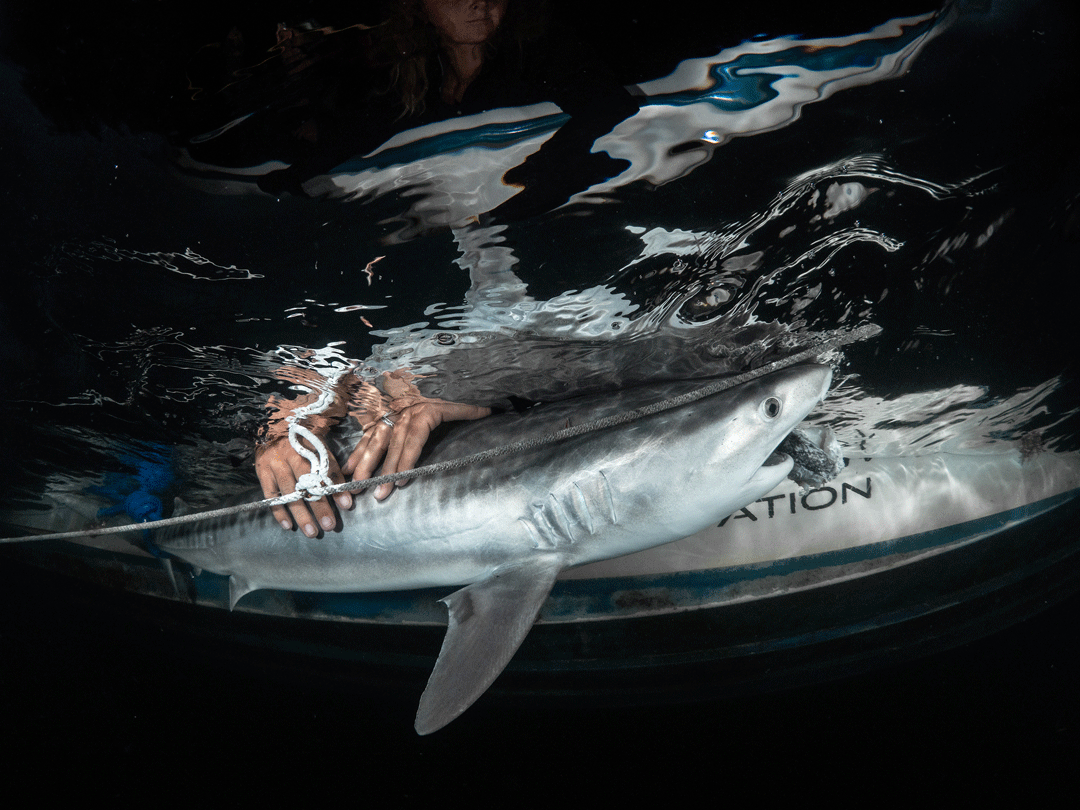Tiny tiger on the line
Arriving at the airport to the Sharklab and meeting the five other faces with whom I’d be spending the next two months, five girls whose passion for the oceans had brought them to the Sharklab, none of us sure what to expect, but we knew we were excited. We boarded a small plane that would take us to a remote island and to the Sharklab we had all heard so much about and were ready to learn and to contribute to.
Arriving we found ourselves amidst power outages, island-wide fuel shortages and mosquito swarms and realised that despite everything the Sharklab carried on, because the natural world out there didn’t stop, and so neither could we. We had come to contribute to an ongoing legacy of shark and ecosystem research that the current staff and all those who had been a part of the Sharklab for the past thirty years had been contributing to, and we were learning that with field research comes a lot of diligent, creative, fun, exhausting and exhilarating hard work. Field research bends the confines of society’s boxes that tell you your workday starts at 9 am and ends at 5 pm and your work stays within those hours. Marine science asks that you are ready to observe at all hours of the day, to witness the world of nature and the mysteries of the lives within it. And if you want to witness it, record it, understand it, and share knowledge with the outside world then you have to bend those societal work confines and be ready to be out there any time of the day or night, through the rain and the hot weather, in the night and in the early mornings and be ready to see things that few others may have ever had the chance to see.
My once in a lifetime moment came as I was going out for my first longline check with the Sharklab. These research longlines are put out once a month to contribute to shark population research and once set, needed to be checked every four hours for 24-hours. My group’s assigned time to go out was 2 am, a time I was quite excited about since sharks are more active at night and I figured I’d be more likely to see something. We woke up and headed aboard the boat in the dead of the night with lightning flashing in the distance, to check the five longlines. The previous group had seen four sharks during their 10 pm check so we had high hopes. We checked the lines quickly without seeing any sharks and I started to feel disappointment as we neared the end. This would have been my first longline shark work-up and tagging but now it seemed like we wouldn’t be seeing any sharks. We passed by a section of the line and nearly missed the shark caught in it because it was so tiny. We pulled up alongside to see the little body of a juvenile shark with the most beautiful dappled patterning along its body.

Juvenile tiger shark caught on a scientific longline. Photo by Sophie Hart | © Bimini Biological Field Station Foundation - SharkLab
My heart skipped a beat as I realised I was looking at the shark I had dreamed of seeing for so long, a tiger shark, and realised that my first encounter with one was nothing as I had imagined it would be. Not a large, imposing predator in front of me, but just a tiny shark trying to survive the first year of its life. We worked up the shark alongside the boat and I held the dorsal fin to secure it while it was measured and tagged. The little shark was 73cm long and perhaps the smallest tiger that was ever seen at the lab. Clemency, our principal investigator aboard the boat said we’d be lucky if we ever saw a tiger that size again in our lives. They are very rarely seen and somehow, I had been blessed with this precious moment. A moment that would have never been experienced had I not been up at the middle of the night seeking to advance and increase our understanding of sharks and the natural world that we all share.
